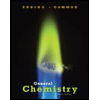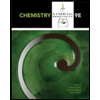
Calculate the work performed by a person who exerts a force of 30 N(N = newtons) to move a box 30 meters if the force were (a) exactly parallel to the direction of movement, and (b)45° to the direction of movement. Do the relative magnitudes make sense?
(a)
Interpretation
To calculate the work performed by a person who exerts a force of 30N to move a box 30 meters if the force were exactly parallel to the direction of movement.
Concept introduction
The work is performed on an object when an object moves a certain distance s due to the force F. Mathematically, it is indicated by the dot product of the force vector F and the distance vector s. The mathematical equation is given below,
Work = F.s = |F||s| cos Ѳ
Where Ѳ is the angle between the vectors F and s. The unit of work is joules. Work is a way to transfer the energy. The energy is defined as the ability to do work and so energy and work are described using the same unit in joules.
Answer to Problem 2.1E
Work exactly parallel to the direction of movement = 900 J
Explanation of Solution
The work is defined as force x displacement [distance].
In the given question
work = 30N
distance = 30m
Work = F.s
Therefore work = 30 N.30 m= 900 J
Thus the Work exactly parallel to the direction of movement = 900 J
(b)
Interpretation
To calculate the work performed by a person who exerts a force of 30N to move a box 30 meters if the force were 45° to the direction of movement.
Concept introduction
The work is performed on an object when an object moves a certain distance s due to the force F. Mathematically, it is indicated by the dot product of the force vector F and the distance vector s. The mathematical equation is given below,
Work = F.s = |F||s| cos Ѳ
Where Ѳ is the angle between the vectors F and s. The unit of work is joules. Work is a way to transfer the energy. The energy is defined as the ability to do work and so energy and work are described using the same unit in joules.
Answer to Problem 2.1E
Work were 45° to the direction of movement = 640 J
Explanation of Solution
The work is defined as force x displacement [distance].
In the given question
work = 30N
degree = 45°
Work = F.s = |F||s| cos Ѳ
Therefore work = 30 N. 30m cos 45°
= 30 x 30 x0.71
Work = 640 J
Thus the work at 45° to the direction of movement = 640 J
Want to see more full solutions like this?
Chapter 2 Solutions
Physical Chemistry
- The enthalpy of combustion of diamond is -395.4 kJ/mol. C s, dia O2 g CO2 g Determine the fH of C s, dia.arrow_forwardThe Dieterici equation of state for one mole of gas is p=RTe-aVRTV-b Where a and b are constants determined experimentally. For NH3g, a = 10.91 atm. L2 and b = 0.0401 L. Plot the pressure of the gas as the volume of 1.00 mol of NH3g expands from 22.4 L to 50.0 L at 273 K, and numerically determine the work done by the gas by measuring the area under the curve.arrow_forwardCalculatethe work on the system whena piston is compressed by a pressure of 1780torr from 3.55 L to1.00 L.arrow_forward
- Explain inyour own words why work done by the system is defined as the negative of pV, not positive pV.arrow_forwardA 220-ft3 sample of gas at standard temperature and pressure is compressed into a cylinder, where it exerts pressure of 2000 psi. Calculate the work (in J) performed when this gas expands isothermally against an opposing pressure of 1.0 atm. (The amount of work that can be done is equivalent to the destructive force of about 1/4 lb of dynamite, giving you an idea of how potentially destructive compressed gas cylinders can be if improperly handled!)arrow_forwardWhat is the change in internal energy when a gas contracts from 377mL to 119mLundera pressure of 1550 torr, whileat the same time being cooled by removing 124.0J ofheat energy?arrow_forward
- Assume that 1.20 g of benzoicacid, C6H5COOH, is burned in a porcelain dish exposed to the air.If 31, 723 J of energy is givenoff andthe surrounding temperature is 24.6C, calculate q, w, H,and U. Compare your answers to those from the previousproblem.arrow_forwardNitrogen gas (2.75 L) is confined in a cylinder under constant atmospheric pressure (1.01 105 pascals). The volume of gas decreases to 2.10 L when 485 J of energy is transferred as heat to the surroundings. What is the change in internal energy of the gas?arrow_forwardDry ice is solid carbon dioxide; it vaporizes at room temperature and normal pressures to the gas. Suppose you put 21.5 g of dry ice in a vessel fitted with a piston (similar to the one in Figure 6.9 but with the weight replaced by the atmosphere), and it vaporizes completely to the gas, pushing the piston upward until its pressure and temperature equal those of the surrounding atmosphere at 24.0C and 751 mmHg. Calculate the work done by the gas in expanding against the atmosphere. Neglect the volume of the solid carbon dioxide, which is very small in comparison to the volume of the gas phase.arrow_forward
 Physical ChemistryChemistryISBN:9781133958437Author:Ball, David W. (david Warren), BAER, TomasPublisher:Wadsworth Cengage Learning,
Physical ChemistryChemistryISBN:9781133958437Author:Ball, David W. (david Warren), BAER, TomasPublisher:Wadsworth Cengage Learning, Chemistry: Principles and PracticeChemistryISBN:9780534420123Author:Daniel L. Reger, Scott R. Goode, David W. Ball, Edward MercerPublisher:Cengage Learning
Chemistry: Principles and PracticeChemistryISBN:9780534420123Author:Daniel L. Reger, Scott R. Goode, David W. Ball, Edward MercerPublisher:Cengage Learning Chemistry: The Molecular ScienceChemistryISBN:9781285199047Author:John W. Moore, Conrad L. StanitskiPublisher:Cengage Learning
Chemistry: The Molecular ScienceChemistryISBN:9781285199047Author:John W. Moore, Conrad L. StanitskiPublisher:Cengage Learning Principles of Modern ChemistryChemistryISBN:9781305079113Author:David W. Oxtoby, H. Pat Gillis, Laurie J. ButlerPublisher:Cengage Learning
Principles of Modern ChemistryChemistryISBN:9781305079113Author:David W. Oxtoby, H. Pat Gillis, Laurie J. ButlerPublisher:Cengage Learning General Chemistry - Standalone book (MindTap Cour...ChemistryISBN:9781305580343Author:Steven D. Gammon, Ebbing, Darrell Ebbing, Steven D., Darrell; Gammon, Darrell Ebbing; Steven D. Gammon, Darrell D.; Gammon, Ebbing; Steven D. Gammon; DarrellPublisher:Cengage Learning
General Chemistry - Standalone book (MindTap Cour...ChemistryISBN:9781305580343Author:Steven D. Gammon, Ebbing, Darrell Ebbing, Steven D., Darrell; Gammon, Darrell Ebbing; Steven D. Gammon, Darrell D.; Gammon, Ebbing; Steven D. Gammon; DarrellPublisher:Cengage Learning Chemistry & Chemical ReactivityChemistryISBN:9781133949640Author:John C. Kotz, Paul M. Treichel, John Townsend, David TreichelPublisher:Cengage Learning
Chemistry & Chemical ReactivityChemistryISBN:9781133949640Author:John C. Kotz, Paul M. Treichel, John Townsend, David TreichelPublisher:Cengage Learning





